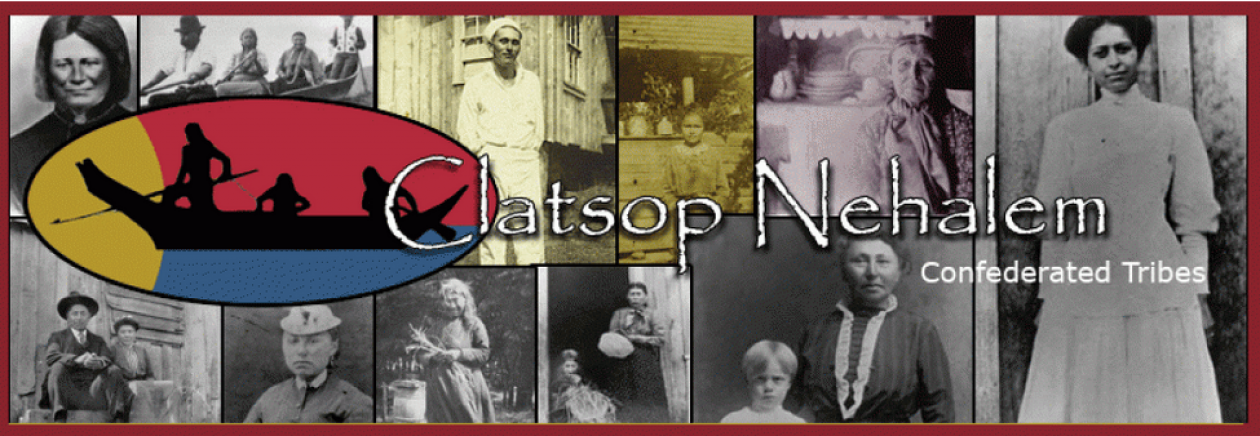The Clatsop-Nehalem Canoe Family, Ne-awahanna Yahanetty, and Dragonfly, our seaworthy canoe, have completed the Paddle to Quinault 2013. This was our third year on the journey. We participated in the Paddle to Squaxin Island 2012. Iin order to gain experience, our canoe family accepted an invitation to join Warm Spring’s Canoe Family, N’chi Wanapum, on the Paddle to Swinomish 2011.
To view a video of the journey, you can view it below:
Or use this link – Paddle to Swinomish Clatsop-Nehalem and Warm Springs Tribe.
For more information contact us at info@clatsop-nehalem.com or 503-895-5643.
Below is the story of our traditional cedar log canoe.
FINDING A CEDAR LOG
Hopefully, the following pictures will show the beginning of the Clatsop-Nehalem’s initial steps in getting a canoe carving project under way.
In the beginning it became very clear to our tribe that cedar logs were not easy to find these days. Remembering back about six decades in my life I can remember a cedar shingle and shake mill that processed hundreds of bundles of shingles and shakes every day and had a boom full of cedar logs to keep this process continuing daily. But, today is evidently a different day.
We made our need known to a wide variety of possible sources, some responses given involved logs that were too small. The log dimension suitable for making a Western Ocean-going Indian canoe required a cedar log 36 feet long
with a diameter of 5 feet at the largest end and not less that 4 feet at the smallest end. When we received a message from an Indian tribe in Taholah, Washington, The Quinault Nation, telling us that they had a log meeting our required dimension. Our time of jubilee had finally occurred. Not only did they have a cedar log, but in addition, a master canoe carver, Guy Capoeman, who would be available to teach a couple of our young apprentices the skill of wood carving. Needless to say, we were all excited about how all of these wonderful things had come together for our Tribe. Through a fund grant received from the National Park Service, we were able to pay for the cedar log and the services or Guy Capoeman.
Before our master carver and apprentices could start the carving process, our log had to be hauled from Taholah, Washington to the National Guard Camp Rilea near Warrenton, Oregon. Our Tribal Chair, Diane Collier, and her son, managed to get a logging truck to make the 250 mile trek up to Taholah and back to Camp Rilea with the log. The log rested under a covered area where each Friday, Saturday and Sunday the carving process took place.
We are very appreciative for help that the Oregon National Guard has given our tribe. Not only for the carving site, but also for allowing our Tribal Council space to conduct our meetings in their Armory.
An Addendum:
Amazing History of Our Cedar Log
It emerged as a seedling, barely showing itself to the sun. Enduring wind, rain, snow, infestations, being tromped on by animals, escaping the hunger of animals like the elk which like the juiciness of its green boughs, it eventually grew up to be a beautiful red cedar tree. This tree from which we have taken our canoe log is reputed to be 700 years old. As a little seedling it was emerging from the ground way back in the year of 1305.What was North America like during this time period?
Joe Scovell, Hereditary Chief
Clatsop-Nehalem Confederated Tribes
